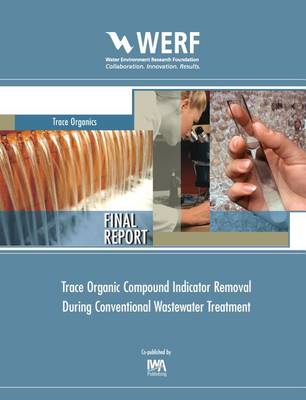Available as eBook only.
Because of concerns related to public and aquatic health, there is increasing interest in evaluating occurrence and removal of trace organic compounds (TOrC) during conventional wastewater treatment. TOrC comprise of various groups of compounds including pharmaceuticals, personal care products, food additives, and other high production chemicals. Due to the large number and variety of compounds present in municipal wastewater influents and effluents, guidance is needed for assessing the removal efficiencies for a wide range or TOrC in conventional wastewater treatment.
The objective of this study was to identify a small number of suitable performance indicators that allow for a rapid characterization of performance efficiency of conventional wastewater treatment facilities. The study focused primarily on investigating the performance of activated sludge treatment processes. The study identified a suite of 22 compounds that represent a range of sorption characteristics and biotransformation kinetics in mixed liquor. Based on these characteristics these indicator compounds were grouped into nine bin categories that represent a larger group of TOrC with similar sorption and biotransformation. Each bin category was described in terms of anticipated range of removal efficiency and the accuracy and reliability of predicting fate during activated sludge treatment using current fate models. Solid retention time (SRT) was found to drive the biotransformation of indicator compounds that are moderately biotransformed. Threshold SRTs were defined for each indicator that exhibited more than 80 percent removal.
- ISBN10 1780400519
- ISBN13 9781780400518
- Publish Date 14 January 2013
- Publish Status Active
- Publish Country GB
- Imprint IWA Publishing
- Format eBook
- Pages 358
- Language English
